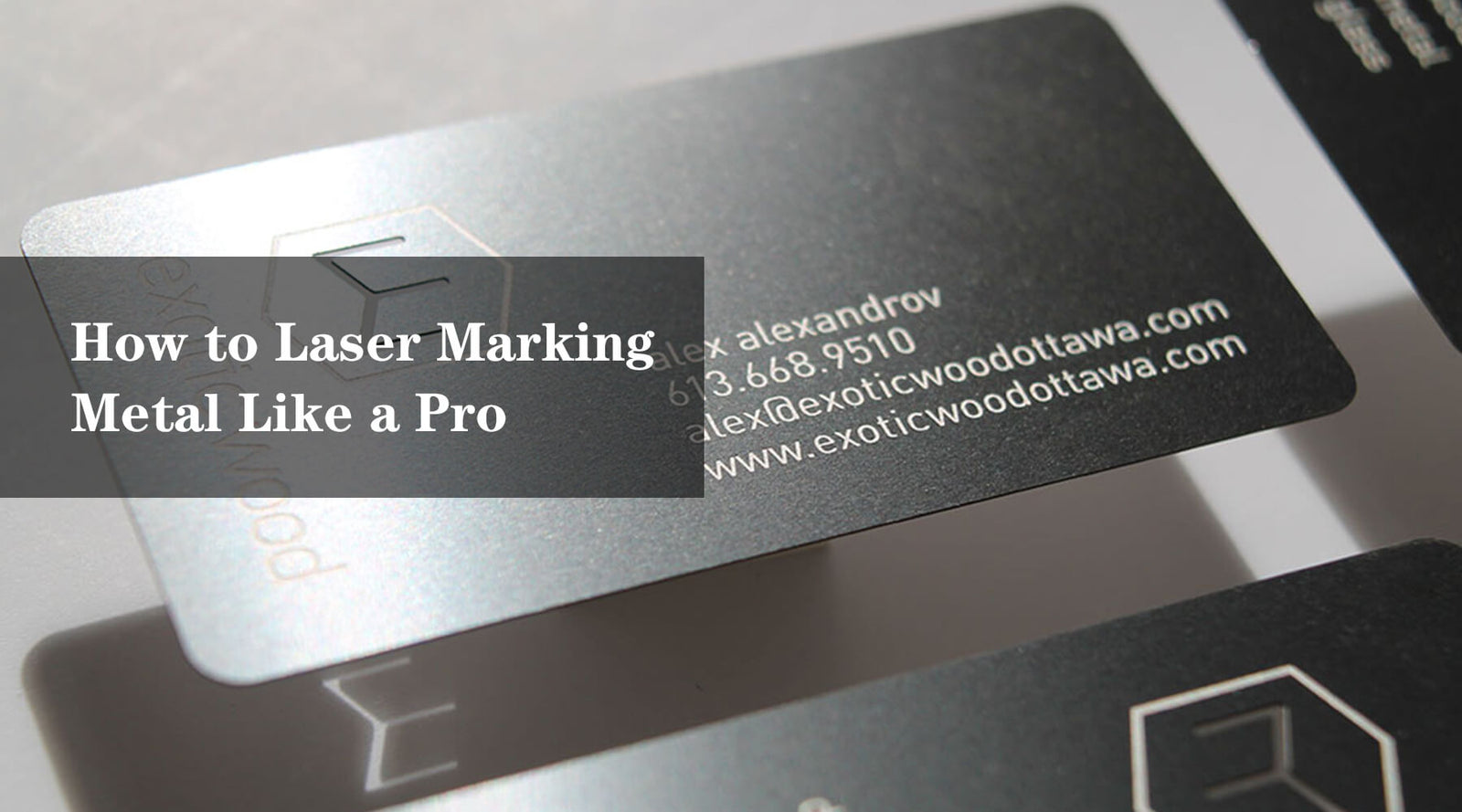Laser marking metal is a process used to create designs and markings on metal surfaces. It is a popular technique used in various industries such as jewelry making, automotive manufacturing, electronics, and more. Laser marking metal is a precise and efficient method that produces high-quality results. In this article, we will explore the process of metal laser engraving and provide tips on how to laser mark metal like a pro.
What is Laser Marking Metal?

Metal laser marking is a process that uses a high-powered laser beam to etch designs and markings onto metal surfaces. The laser beam removes a small layer of the metal surface, leaving behind a permanent mark. The process is precise and can create intricate designs with high accuracy.
Types of Metal Used in Laser Engraving

Not all metals are suitable for laser engraving. The best metals for laser engraving are those that have high thermal conductivity and low reflectivity. The most commonly used metals for laser engraving include:
* Stainless steel
* Aluminum
* Brass
* Copper
* Titanium
How to Laser Marking Metal?
Preparing the Metal Surface
Before laser marking metal, the surface must be clean and free of any debris or contaminants. Any dirt, grease, or oil can interfere with the laser's ability to create a clear and accurate mark. Use a degreaser and a clean cloth to remove any contaminants from the metal surface.
Choosing the Right Laser
Choosing the right metal marking laser for your project is important. Different lasers have different wavelengths, which can affect the type of metal that can be engraved. CO2 lasers are commonly used for engraving non-metallic materials, while fiber lasers are better suited for engraving metals.However, if you want to mark metal using co2 laser engraver, you had better choose a high-powered CO2 laser engraver, you will need to follow these steps:
Choose the metal you want to engrave: CO2 lasers are best suited for engraving on coated metals, such as anodized aluminum or coated brass. Make sure the metal is clean and free of any oils, dirt, or debris.
Create your design: Use a design software program to create your design or text that you want to engrave on the metal surface. Make sure that the design is in vector format, which is compatible with the laser engraving machine.
Set up the laser engraving machine: Set up the laser engraving machine and connect it to your computer. Adjust the settings of the machine, including the power and speed of the laser beam, depending on the metal you are engraving.
Secure the metal: Secure the metal onto the engraving bed of the machine using clamps or tape, making sure it is level and stable.
Start the engraving process: Load your design into the laser engraving software and start the engraving process. The laser beam will vaporize the surface of the metal to create the engraved design.
Clean the metal: After engraving, remove the metal from the machine and clean it with a soft cloth to remove any debris or residue.
It is important to note that marking metal with a CO2 laser engraver may not produce as precise and detailed results as other types of laser engravers, such as fiber laser engravers, which are specifically designed for engraving on metal surfaces.
Adjusting the Laser Settings
Once you have chosen the right laser, it is important to adjust the laser settings to achieve the desired results. The laser's power, speed, and frequency can be adjusted to create different effects on the metal surface. It is important to test the laser settings on a small piece of metal before engraving the final product.
Tips for Laser Marking Metal Like a Pro

- Choose the right metal - Not all metals are suitable for laser engraving. Choose a metal that has high thermal conductivity and low reflectivity for the best results.
- Prepare the metal surface - Make sure the metal surface is clean and free of any contaminants before laser marking.
- Choose the right laser - Choose the right metal marking laser for your project. CO2 lasers are commonly used for engraving non-metallic materials, while fiber lasers are better suited for engraving metals.
- Adjust the laser settings - Adjust the laser's power, speed, and frequency to achieve the desired results. Test the laser settings on a small piece of metal before engraving the final product.
- Use a protective coating - Use a protective coating on the engraved metal to protect it from wear and tear.
- Practice - Practice makes perfect. The more you practice laser marking metal, the better you will become.
Common Applications of Laser Marking Metal
Laser Marking Metal is a versatile technique that is used in various industries, including:
* Laser-marking metal business cards
* Laser marking metal pen
* Laser marking metal tumbler
* Laser marking metal plant stakes
Conclusion
Laser marking metal is a precise and efficient way to create designs and markings on metal surfaces. It is a popular technique used in various industries and can produce high-quality results. By choosing the right metal, preparing the metal surface, choosing the right laser, adjusting the laser settings, using a protective coating, and practicing, you can laser mark metal like a pro.

